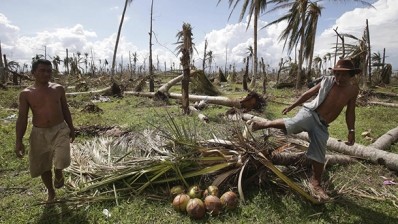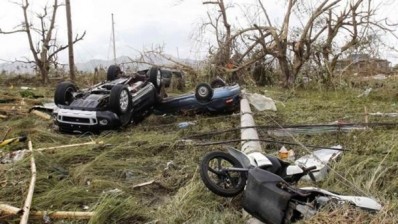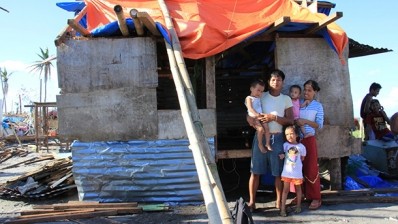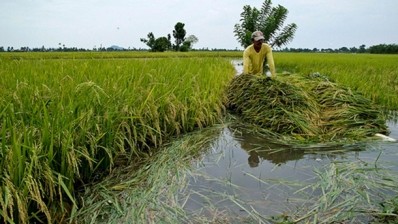Fast action needed to save Philippines’ winter crops after typhoon
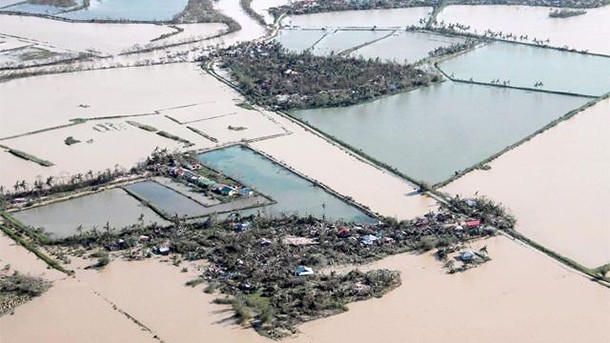
“Initial estimates reveal that hundreds of thousands of hectares of rice and other key crops like coconut have been affected due to the typhoon,” said Dominique Burgeon, director of the FAO's Emergency and Rehabilitation Division.
“Planting of the secondary season, mostly irrigated rice, was well underway and it is expected that crops are severely compromised. If we want to avoid entire regions of the country having to rely on food aid, we need to act now to help vulnerable families to plant or replant by late December.”
It is thought that hundreds of thousands of farmers will need urgent assistance to sow new seeds before the end of the current planting season.
Second crop a concern
While rice production at a national level is likely to remain close to last year’s level, the damage at a regional level is more severe. The FAO warned that farmers in areas hit by the typhoon could face severe food security and livelihood problems if they do not succeed in planting the next crop in the weeks ahead.
The typhoon caused damage in the central part of the country to the 2013 main season rice crop, the harvesting of which was well advanced. It also badly disrupted planting of the current 2013-2014 secondary season, which ends in late December.
There is also concern that many storage facilities may have been destroyed, along with their contents.
The five regions most severely affected by the typhoon in terms of cereal crop losses accounted for one-third of the total rice production in 2012.
Damage to the main season paddy crop both by Typhoon Haiyan and by Typhoon Nari, which hit northern parts of the country in October, as well as disruption to the planting of the second season is expected to result in lower rice production than anticipated for 2013.
FAO has downgraded its forecast for the 2013 rice production in the country to 18 million tonnes from the expectation of a bumper crop of 18.9 million tonnes at the beginning of the season, FAO’s Global Information and Early Warning System said today.
The rice production shortfall of 900 000 tonnes will be felt disproportionally in the five most affected regions.
Rebuilding essential
In addition to providing seeds and fertilizers, rebuilding agricultural infrastructure such as storage and irrigation facilities destroyed by Typhoon Haiyan is critical for the longer-term outlook for the regions’ rice production, the FAO said.
The secondary rice season is largely dependent on irrigation systems, damage to which will impact the success of the crop.
An FAO assessment team is currently in typhoon-damaged areas to get a more detailed picture of crop and rural infrastructure damages and the needs of affected populations.
Some 13 million people have been affected by Typhoon Haiyan and over 4 million displaced, according to the latest estimates by the UN Office for the Coordination of Humanitarian Affairs. An estimated 2.5 million people are currently in need of food assistance.
